Hyundai Tucson: Variable Force Solenoid (VFS)
Description
CVVT (Continuous Variable Valve Timing) system advances or retards the valve opening and closing timing of the intake or the exhaust valve in accordance with the ECM control, calculated by the engine speed and the load. The CVVT control causes a valve over-lap or under-lap between the intake valve and the exhaust valve. This improves fuel efficiency, reduces exhaust gases (NOx. HC) and enhances the engine performance, thanks to reduced pumping loss, internal EGR (Exhaust Gas Recirculation) release, improved combustion stability, and increased volumetric efficiency.The system consists of the CVVT Oil Control Valve (OCV), which receives the ECM PWM (Pulse With Modulation) control signal to change the path of the engine oil to supply to or discharge from the cam phaser, the CVVT Oil Temperature Sensor (OTS), which measures the temperatures of the engine oil, and the cam phaser, which varies the cam phasing by using the hydraulic force of the engine oil.The oil delivered from the CVVT oil control valve varies the phase angle of the cam, by rotating the rotor connected to the camshaft of the cam phaser and causing the camshaft to rotate in the direction of its engine running rotation (intake advanced / exhaust retarded) or the opposite direction (intake retarded/ exhaust advanced).
Variable Force Solenoid (VFS) Bank 1 / Intake , Exhaust
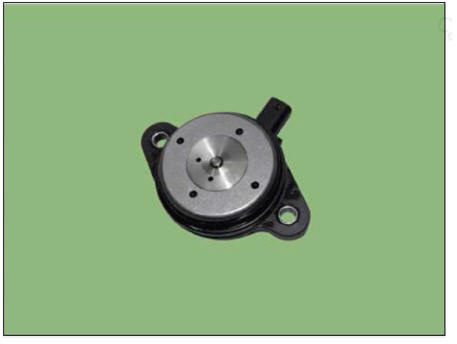
Specification
Variable Force Solenoid (VFS) Bank 1 / Intake , Exhaust

Circuit Diagram
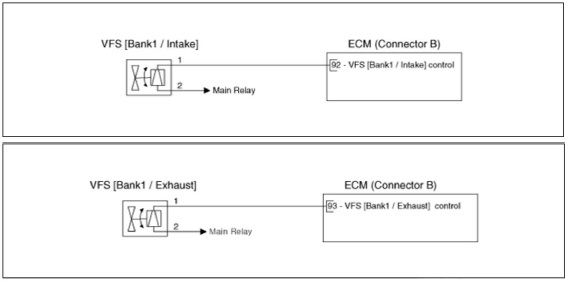
Harness Connector
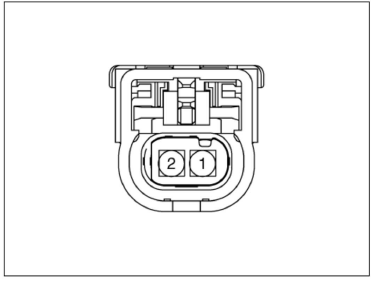
Removal
- Turn ignition switch OFF and disconnect the battery negative (-) terminal.
- Disconnect the variable force solenoid connector (A).
- Remove the mounting bolt (B), and then remove the variable force solenoid(VFS) from the engine.
Tightening Torque :
9.8 - 11.8 N.m (1.0 - 1.2 kgf.m, 7.2 - 8.7 lb-ft)
Bank 1 / Intake
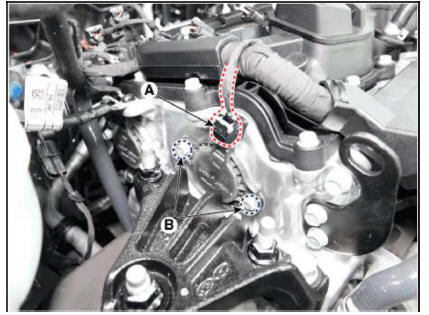
Bank 1 / Exhaust

Installation
WARNING
- Install the component to the specified torque.
- Note that internal damage may occur when the component is dropped. If the component has been dropped, inspect before installing.
- Do not use any dropped variable force solenoid (VFS) valve.
- Note below cautions when installing variable force solenoid (VFS) valve.
1) After replacing the O-ring (A) of variable force solenoid (VFS) valve, apply engine oil on new O-ring (A).
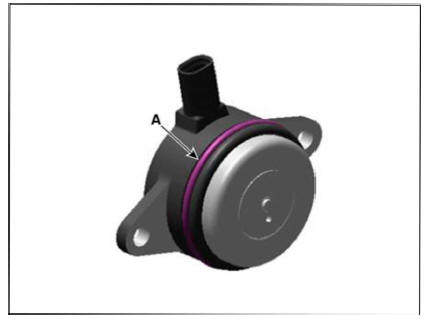
2)Push variable force solenoid (VFS) valve up to the timing chain cover, and temporarily tighten the bolt.
3)Tighten the variable force solenoid (VFS) valve to the specified torque.
- Install in the reverse order of removal.
READ NEXT:
 Fuel Pressure Control Valve (FPCV)
Fuel Pressure Control Valve (FPCV)
Description
Installed on the high pressure fuel pump, the Fuel Pressure Regulator Valve
controls the fuel amount
flowing into the injectors in accordance with the ECM signal calculated based on
various engine
conditions.
Specification
 Electric WGT Control Actuator- Desrcription
Electric WGT Control Actuator- Desrcription
Desrcription
The Electric Waste Gate Actuator(EWGA) is installed on the turbocharger. EWGA
operates vain in
west gate turbocharger and controls the compressed air by PWM signal of ECM.
Specification
EWGA Position Sensor integrated into EWGA
SEE MORE:
 Surround View Monitor (SVM)
Surround View Monitor (SVM)
Surround View Monitor can help assist in
parking using the cameras installed on
the vehicle and displays images around
the vehicle through the infotainment
system screen.
Parking Assist View function helps
the driver to see the surround
 Rear wheel speed sensor - Inspection
Rear wheel speed sensor - Inspection
Inspection
Measure the output voltage between the terminal of the wheel speed
sensor and the body ground.
WARNING
In order to protect the wheel speed sensor, when measuring output
voltage, a 100Q resister must be used as shown.
C
Information
- Home
- Hyundai Tucson - Fourth generation (NX4) - (2020-2023) - Owner's Manual
- Hyundai Tucson - Fourth generation (NX4) - (2020-2023) - Workshop Manual